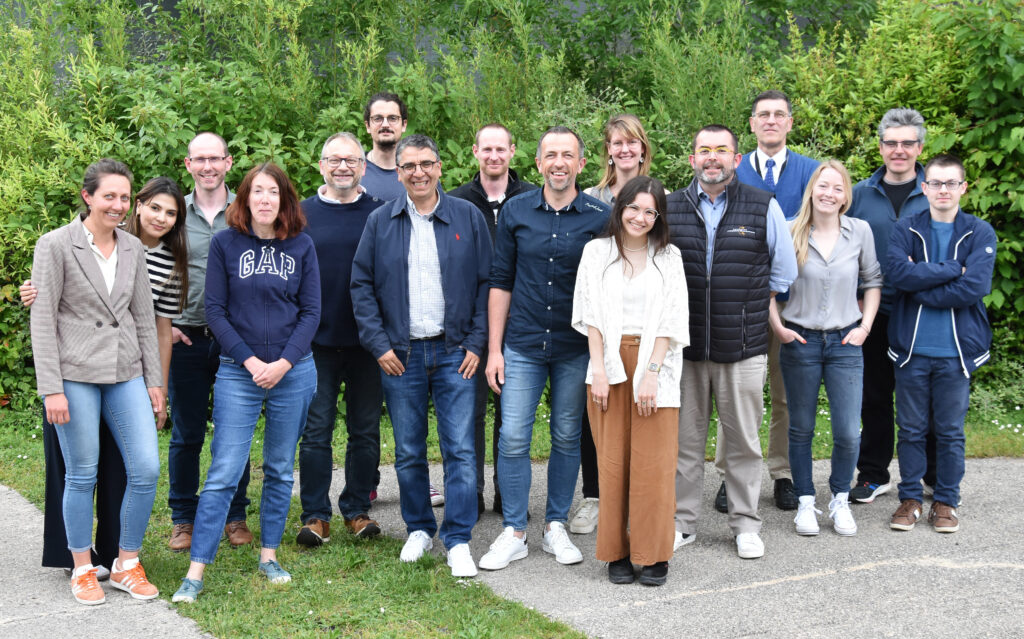Our team is interested in the molecular aging of matrix macromolecules (especially collagens and elastin) and in its role in the development of vascular pathologies associated with chronological or accelerated aging (diabetes mellitus, chronic kidney diseases). Molecular aging is defined as the alterations that proteins undergo during their biological life. These alterations are of two types, either addition reactions (for instance, oxidation, glycation, carbamylation) or cleavage reactions (proteolytic or not). We have shown in previous works that elastin-derived peptides (EDP) participate in the vascular and metabolic complications associated with aging and that the process of carbamylation, corresponding to the non-enzymatic fixation of cyanate that results from the spontaneous degradation of urea on the amino groups of proteins, is fundamentally involved in matrix aging and the associated pathophysiological consequences. The research project of our Team is structured into 3 complementary axes:
Axis 1: Molecular and cellular characterization of vascular matrix aging
The particularity of matrix proteins is their long half-lives (collagen: 20 years / elastin: 70 years). Matrix proteins are therefore strongly exposed to molecular aging. The physical properties of the ECM, especially its density, its rigidity and the aging of its components, influence the behavior of cells in contact with it. The objective of this axis is to analyze the phenotypic modulation of vascular smooth muscle cells (vSMC) in contact with type I collagen and elastin modified by carbamylation and of different stiffness. In parallel, this axis will also be devoted to the characterization of elastic fibers/adipocyte interactions and will identify the factors and signaling pathways involved in the production of elastases by adipocytes. To address these questions, methodological approaches include the combination of traditional biochemical and imaging techniques together with more recent biophysical approaches such as the analysis of vSMC stiffness by atomic force microscopy (AFM).
Axis 2: Pathophysiological consequences of vascular matrix aging
Matrix proteins aging has an impact at the molecular but also the tissue level. This axis aims at analyzing the pathophysiological consequences of matrix aging in various situations characterized by accelerated aging of the vascular system. This axis will characterize (i) the impact of collagen carbamylation on platelet function, hemostasis and arterial thrombosis, (ii) the role played by ECM aging in the regulation of the arterial autophagic process in vSMC, essential for maintaining tissue homeostasis, as well as (iii) the role of PVAT in the process of vascular ECM remodeling through the use of different adapted cellular and animal models.
Axis 3: Receptors, signaling and pharmacological approaches
In addition to the mechanical impacts, matrix aging can also dysregulate cellular functions through different receptors and thus contribute to functional vascular alterations. Our previous works have shown that the elastin receptor complex (ERC), via the catalytic activity of its neuraminidase 1 (NEU1) subunit, plays a predominant role in the deleterious effects of EDP, placing this sialidase as a privileged pharmacological target. This axis will (i) help in better understanding the membrane topology of NEU1 and its assembly within the ERC, (ii) identify its membrane interaction partners and therefore the membrane receptors that can be modulated by desialylation through NEU1 and the ERC, and (iii) develop innovative pharmacological strategies dedicated to the inhibition of NEU1 dimerization and NEU1 catalytic activity (peptide interference, synthesis of new analogues of the sialidase inhibitor DANA, purification of bioactive natural compounds from agro-resources). In order to better understand the cellular and molecular mechanisms mediated by the carbamylation-derived products and their role in the remodeling of the vascular wall, this axis is also devoted to the identification of the receptor(s) of carbamylated proteins using conventional strategies and targeted purification methods.





